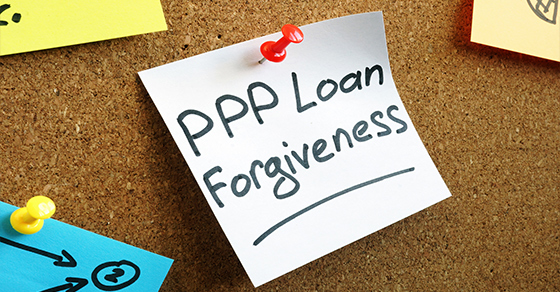
A critical deadline is approaching for many of the businesses that have received loans under the Paycheck Protection Program (PPP), which was created in March 2020 by the CARES Act. If these borrowers don’t take action before the deadline expires, their loans will become standard loans, and the borrowers could be responsible for repaying the full amount plus 1% interest before the maturity date. In addition, some borrowers could face audits.
PPP basics
PPP loans generally are 100% forgivable if the borrower allocates the funds on a 60/40 basis between payroll and eligible nonpayroll costs. Nonpayroll costs initially included only mortgage interest, rent, utilities and interest on any other existing debt, but the Consolidated Appropriations Act (CAA), enacted in late 2020, significantly expanded the eligible nonpayroll costs. For example, the funds can be applied to certain operating expenses and worker protection expenses.
The CAA also withdrew the original requirement that borrowers deduct the amount of any Small Business Administration (SBA) Economic Injury Disaster Loan (EIDL) advance from their PPP forgiveness amount. And it provides that a borrower doesn’t need to include any forgiven amounts in its gross income and can deduct otherwise deductible expenses paid for with forgiven PPP proceeds.
Forgiveness filings
PPP borrowers can apply for forgiveness at any time before their loans’ maturity date (loans made before June 5, 2020, generally have a two-year maturity, while loans made on or after that date have a five-year maturity). But, if a borrower doesn’t apply for forgiveness within 10 months after the last day of the “covered period” — the eight-to-24 weeks following disbursement during which the funds must be used — its PPP loan payments will no longer be deferred and it must begin making payments to its lender.
That 10-month period is coming to an end for many so-called “first-draw” borrowers. For example, a business that applied early in the program might have a covered period that ended on October 30, 2020. It would need to apply for forgiveness by August 30, 2021, to avoid loan repayment responsibilities.
Borrowers apply for forgiveness by filing forms with their lenders, who’ll then submit the forms to the SBA. The specific type of form needed to be filed is dependent on the amount of the loan and whether a business is a sole proprietor, independent contractor or self-employed individual with no employees.
If the SBA doesn’t forgive a loan or forgives only part of it, the lender will notify the borrower when the first payment is due. Interest accrues during the time from disbursement of the loan proceeds to SBA remittance to the lender of the forgiven amount, and the borrower must pay the accrued interest on any amount not forgiven.
Some businesses may have delayed filing their forgiveness applications to maximize their employee retention tax credits. That’s because qualified wages paid after March 12, 2020, through December 31, 2021, that are taken into account for purposes of calculating the credit amount can’t be included when calculating eligible payroll costs for PPP loan forgiveness. These businesses should pay careful attention to when their 10-month period expires to avoid triggering loan repayment.
Audit action
Borrowers also should be aware of the possibility that they’ll be audited by the SBA’s Office of Inspector General, with support from the IRS and other federal agencies. The SBA will automatically audit every loan that’s more than $2 million after the borrower applies for forgiveness, but smaller loans may be subject to scrutiny, too.
Although the SBA has established an audit safe harbor for loans of $2 million or less, that carveout applies only to the examination of the borrower’s good faith certification on the loan application that the “current economic uncertainty makes the loan request necessary to support the ongoing operations” of the business. The SBA also recently notified lenders that it’s eliminating the loan necessity requirement for loans of more than $2 million. Those borrowers will no longer need to complete a burdensome Loan Necessity Questionnaire.
All borrowers, however, still might be audited on matters such as eligibility (for example, the number of employees), calculation of the loan amount, how the funds were used and entitlement to forgiveness. Borrowers that receive adverse audit findings may be required to repay their loans and, depending on the missteps uncovered, could face civil penalties and prosecution under the federal False Claims Act.
Businesses that received loans of more than $2 million shouldn’t wait to prepare for their audits. They can begin to work with their CPAs now to gather and organize the documents and information that auditors are likely to request, including:
- Financial statements,
- Income and employment tax returns,
- Payroll records for all pay periods within the applicable covered period,
- Calculation of full-time equivalent employees, and
- Bank and other records related to how the funds were used (for example, canceled checks, utility bills, leases and mortgage statements).
Note that some of this documentation will overlap with that required when filing the application for loan forgiveness.
Act now
Businesses nearly always have a lot on their plates, so it’s not surprising that some might not have been laser-focused on the various dates relevant to their PPP loans. Now is the time to ensure that you file your forgiveness application in a timely manner and have the necessary documentation gathered to survive the SBA audit that may follow. Contact us for assistance.
© 2021



